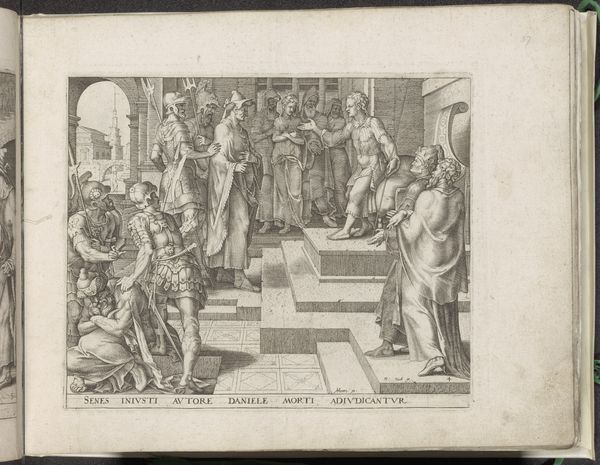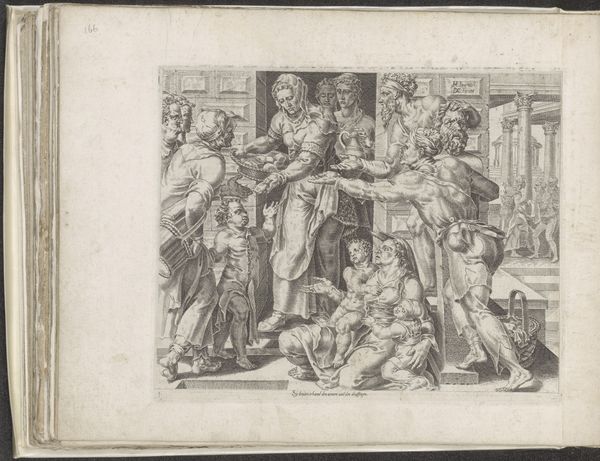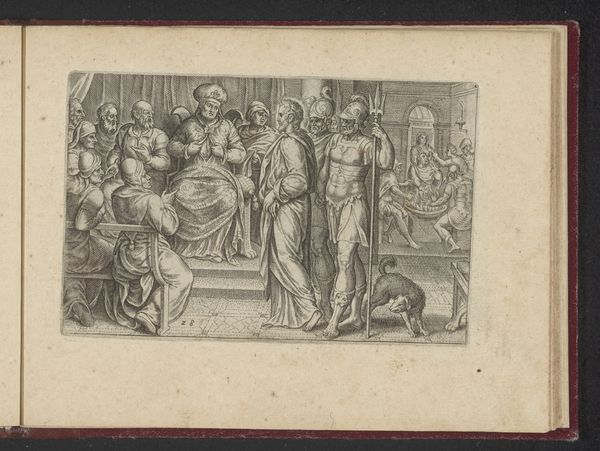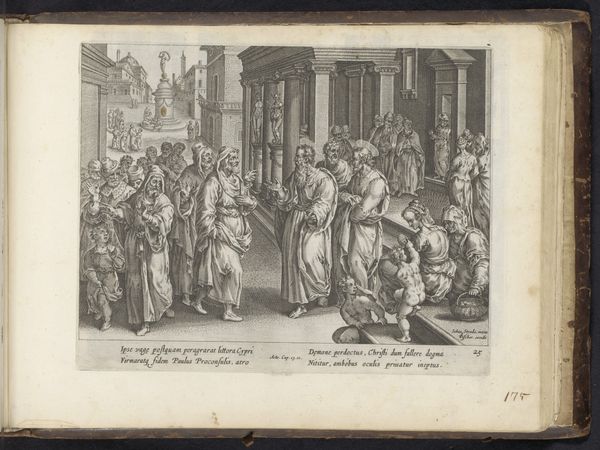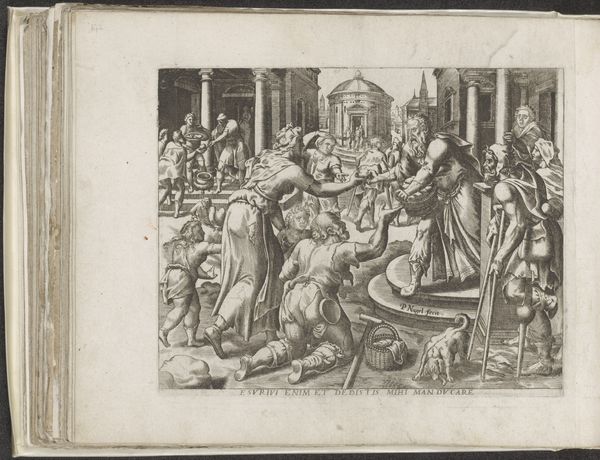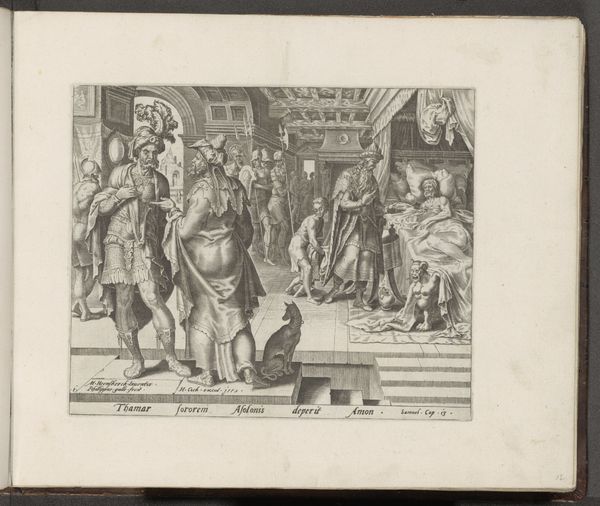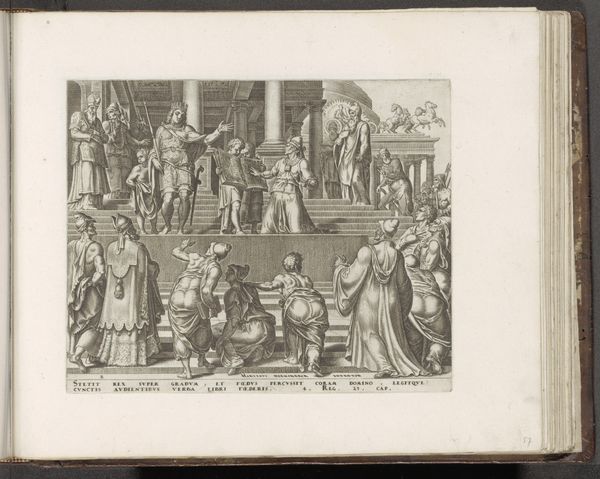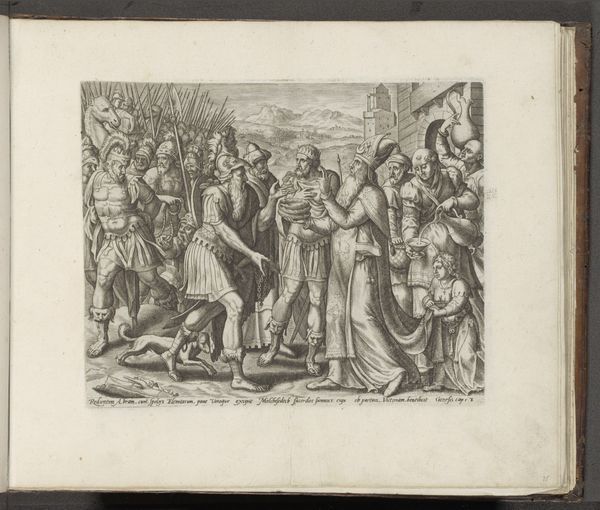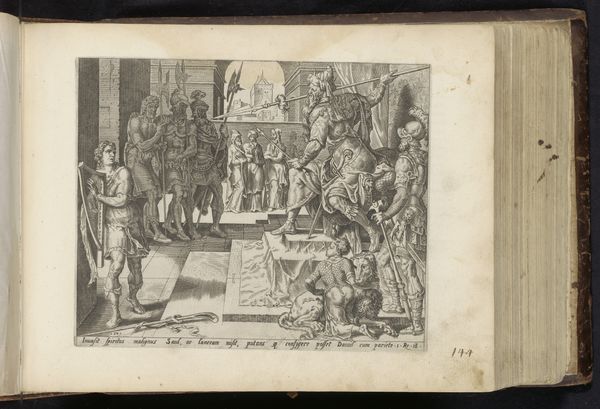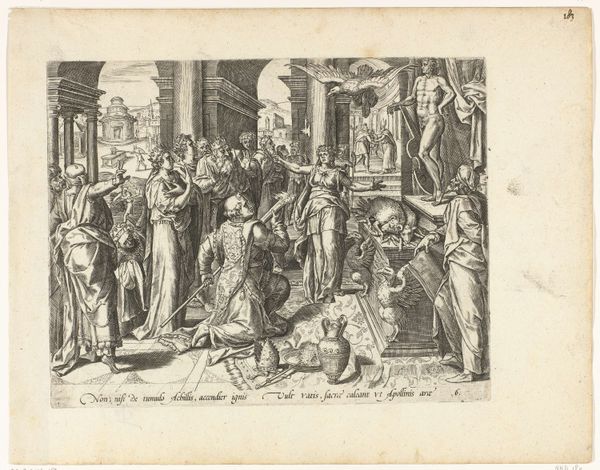
drawing, print, engraving
#
drawing
#
aged paper
#
toned paper
#
light pencil work
# print
#
pen sketch
#
sketch book
#
mannerism
#
figuration
#
personal sketchbook
#
pen-ink sketch
#
pen work
#
sketchbook drawing
#
history-painting
#
sketchbook art
#
engraving
Dimensions: height 205 mm, width 249 mm
Copyright: Rijks Museum: Open Domain
Curator: Philips Galle's 1563 engraving, "Daniël gaat in tegen veroordeling van Susanna," currently held in the Rijksmuseum, depicts a dramatic biblical scene. My initial impression? It feels densely populated yet meticulously controlled; the composition creates an almost theatrical tension. Editor: It does, indeed. Looking at it from a material perspective, the very act of engraving on metal to disseminate this biblical story reveals a deliberate attempt to manufacture and distribute knowledge and beliefs during the Renaissance. Curator: Exactly. Galle’s skill with the burin is undeniable. The lines vary in weight to suggest form and texture. Notice how he uses cross-hatching to create shadows, adding depth to the figures and the architectural background. Editor: And the production of these engravings – consider the workshop, the apprentices involved. Each print that leaves carries not only the story but also embodies the labor, the socio-economic relations, and even the access to materials needed to produce it. This wasn’t a solitary act, but one deeply embedded in its material and economic conditions. Curator: Precisely, but returning to the composition, Daniel’s youthful figure, positioned slightly lower and with arms outstretched, serves as a dynamic focal point. His stance immediately breaks the stagnancy of the elder's judgement, injecting a contrapposto against their rigidity. The use of perspective pulls our eye from Susanna towards Daniel, and then into the receding architectural space, framing him as the voice of reason. Editor: That distribution echoes the larger debates about religious authority occurring at the time; Printmaking became a powerful means for propagating different viewpoints, offering alternative access points that weren't solely controlled by religious institutions. This challenges us to reflect on the means of communicating complex theological notions, of rendering morality material, transferable, and commodified through the distribution networks available. Curator: A keen observation. By closely analyzing these lines, shapes, and their arrangement within the composition, the viewer is confronted with this story about justice, injustice, faith, and ultimately the power of youthful integrity—a concept so exquisitely and structurally designed by Galle’s conscious artistic efforts. Editor: Indeed, thinking through Galle's work brings together artistic expression and material existence. Considering those facets gives you not only access to its design, but to the conditions, means, and networks that bring us closer to a deeper contextual understanding of its significance today.
Comments
No comments
Be the first to comment and join the conversation on the ultimate creative platform.

